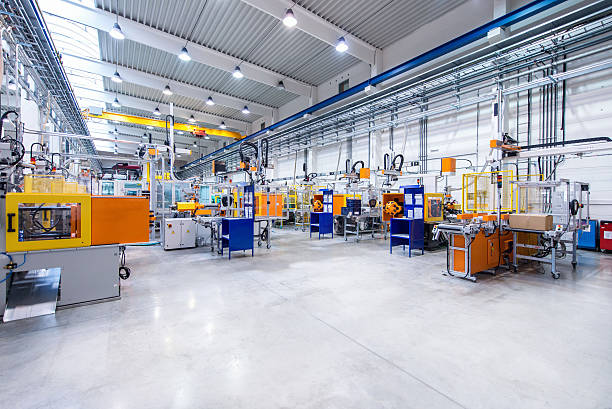Injection molding is one of the most widely used manufacturing processes in the world today It plays a vital role in the production of countless plastic parts found in industries such as automotive medical consumer electronics packaging and more But for those unfamiliar with manufacturing the process can seem complex This article will explain in detail what injection molding is how it works and why it is so valuable in both high volume and precision applications

Definition of Injection Molding
Injection molding is a manufacturing process used to produce parts by injecting molten material into a mold Most commonly the material used is plastic although metals ceramics and glass can also be used in specialized variations of the process In the plastics industry injection molding allows for the mass production of identical components with high accuracy and efficiency
The Basic Process Explained
The injection molding process can be broken down into several key steps Each step is essential to ensure the part being molded comes out with the desired quality dimensions and material properties
1 Material Feeding
The process begins with feeding plastic pellets or granules into a hopper These pellets are typically thermoplastics like polyethylene polypropylene ABS or nylon They may include additives like colorants UV stabilizers or flame retardants depending on the application
2 Melting and Injection
The pellets are conveyed through a heated barrel by a rotating screw As the plastic moves forward it is melted into a thick liquid The molten plastic is then rapidly injected into a closed mold cavity under high pressure This pressure ensures the material fills the entire shape of the mold even in thin or intricate areas
3 Cooling and Solidification
Once inside the mold the hot plastic begins to cool and solidify almost instantly Cooling time depends on the material used the wall thickness of the part and the mold temperature Proper cooling is critical to prevent warping sink marks or internal stress
4 Mold Opening and Ejection
After the part solidifies the mold opens and the part is ejected using ejector pins The mold then closes again and the cycle repeats This process can take anywhere from a few seconds to over a minute per part depending on size and complexity
Mold Design and Importance
Molds are custom-made tools typically crafted from hardened steel or aluminum They are designed with extreme precision because the final product’s accuracy depends heavily on the mold’s quality A mold consists of two halves the core and the cavity which form the shape of the part when closed Molds also include systems for cooling venting and ejection
Designing and manufacturing a mold is the most expensive and time-consuming part of injection molding However once a mold is ready it can produce hundreds of thousands or even millions of parts with consistent quality
Types of Injection Molding
There are several variations of injection molding to suit specific needs
Overmolding involves molding plastic over another component like metal or a different plastic to improve function or appearance
Insert molding is used to embed components like nuts wires or sensors inside a molded part
Micro injection molding creates extremely small precision parts used in electronics and medical devices
Gas assisted injection molding introduces gas into the mold to create hollow sections which reduces weight and material usage
Materials Used in Injection Molding
Thermoplastics are the most common materials used They include
Polypropylene PP
Polyethylene PE
Acrylonitrile butadiene styrene ABS
Polystyrene PS
Polycarbonate PC
Nylon PA
Each material has unique characteristics in terms of strength flexibility transparency and resistance to heat chemicals or UV light Choosing the right material depends on the functional requirements of the end product
Applications Across Industries
Injection molding is used in virtually every industry Some common applications include
Automotive dashboards bumpers and interior components
Medical syringes surgical tools and housings for devices
Consumer goods containers toys kitchenware and furniture
Electronics casings connectors and keyboard components
Packaging bottle caps food trays and closures
Benefits of Injection Molding
One of the biggest advantages of injection molding is its efficiency Once a mold is created parts can be produced quickly and in large volumes This reduces the per-unit cost significantly making the process ideal for mass production
Additional benefits include
High dimensional accuracy
Excellent surface finish
Ability to produce complex geometries
Minimal post-production finishing required
Consistent quality between parts
Low material waste due to recyclability of runners and rejects
Limitations and Considerations
Despite its advantages injection molding has some challenges
High initial cost of mold design and tooling
Long lead time before production can begin
Part design limitations like undercuts or thin walls may require special tooling
Material limitations not all plastics are suitable for this process
These limitations mean injection molding is best suited for high-volume manufacturing where the cost of mold creation can be offset over many units
How to Decide if Injection Molding is Right for Your Product
Choosing injection molding depends on several factors including
Required quantity and production volume
Part complexity and tolerance requirements
Budget for mold development
Desired material and finish
Time constraints and product lifecycle
If your product demands precise replication at high volume with a focus on cost efficiency and consistency injection molding is likely the ideal solution
Conclusion
Injection molding is a powerful and versatile manufacturing process that enables the mass production of high quality plastic components It plays a crucial role in industries ranging from automotive to healthcare by providing efficient cost effective and repeatable results Understanding how it works what materials are involved and how to design for it is essential for manufacturers product designers and entrepreneurs alike
By investing in the right mold design and choosing suitable materials businesses can leverage injection molding to bring their products to market quickly and competitively


